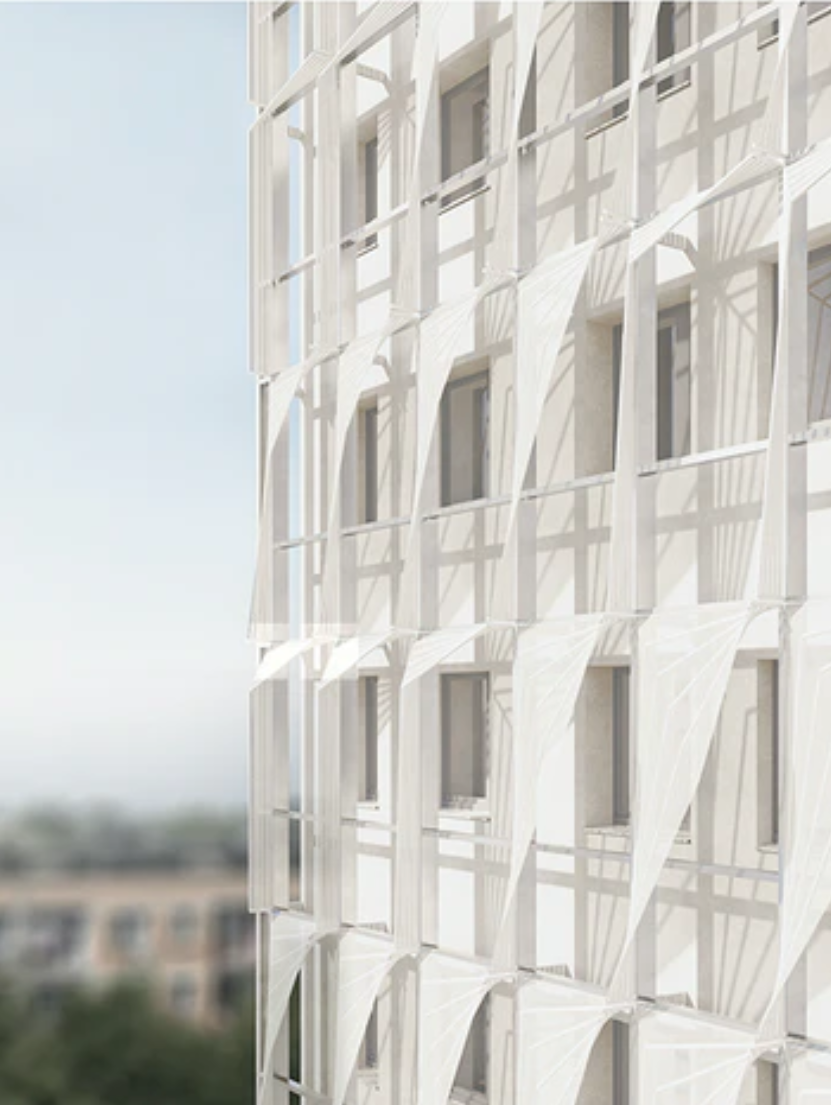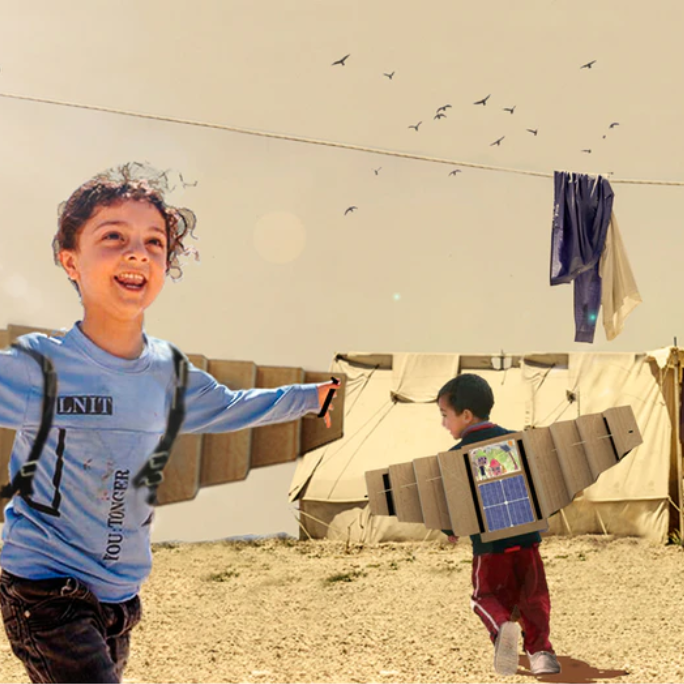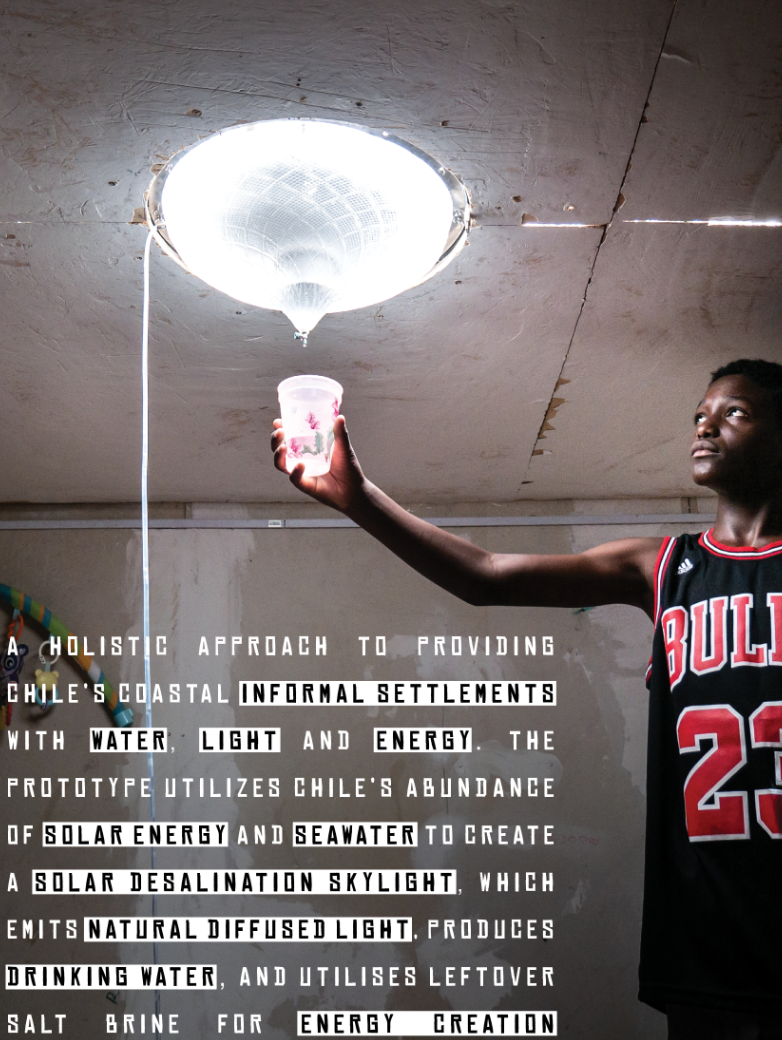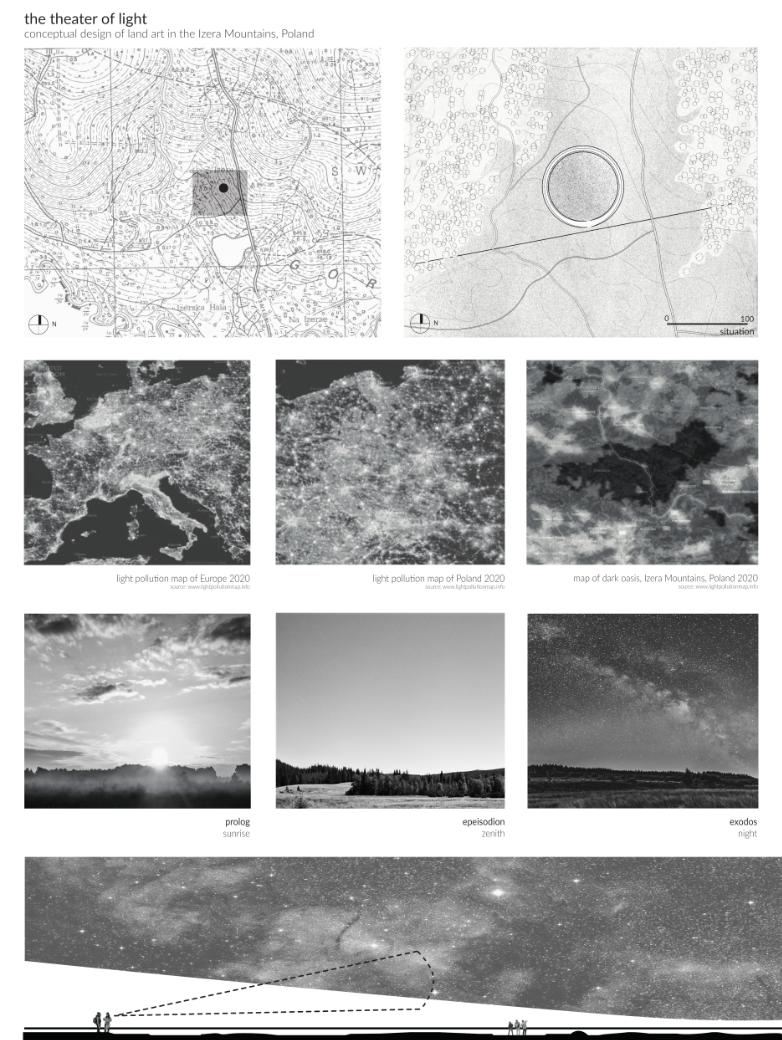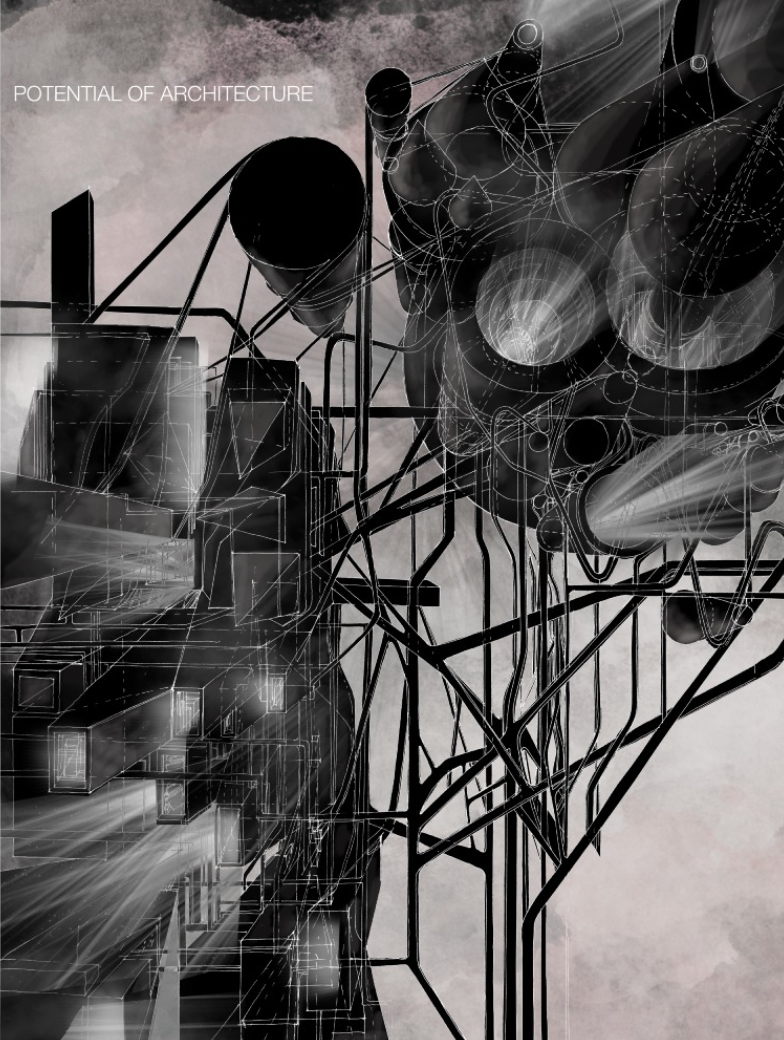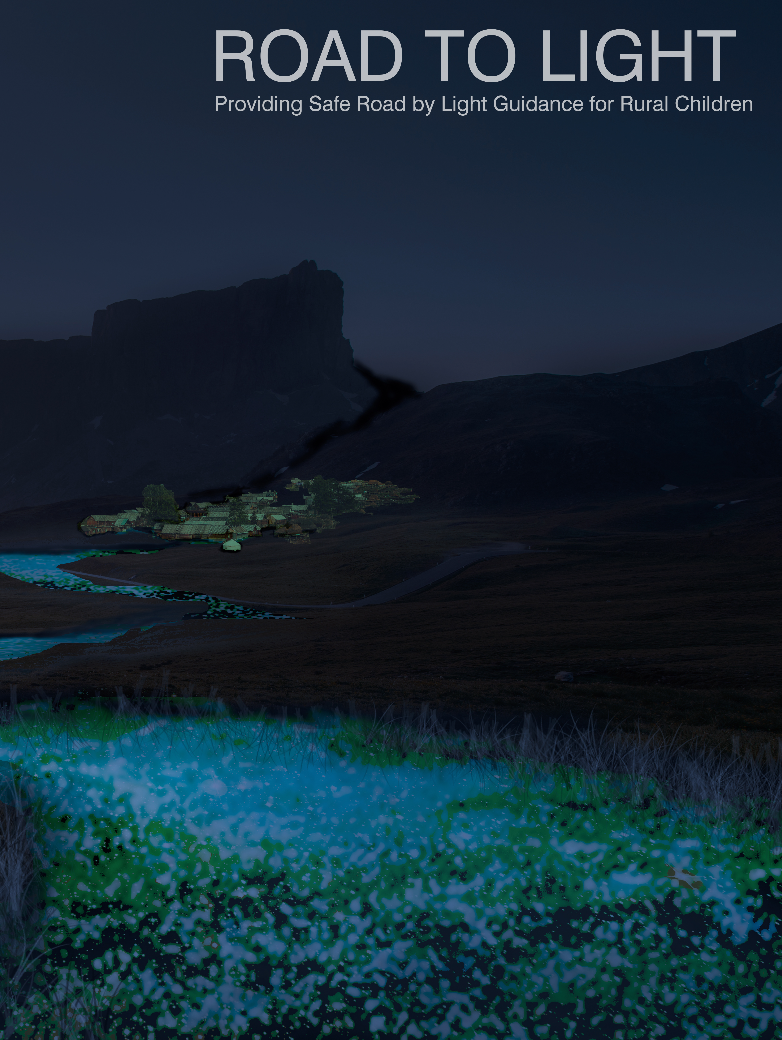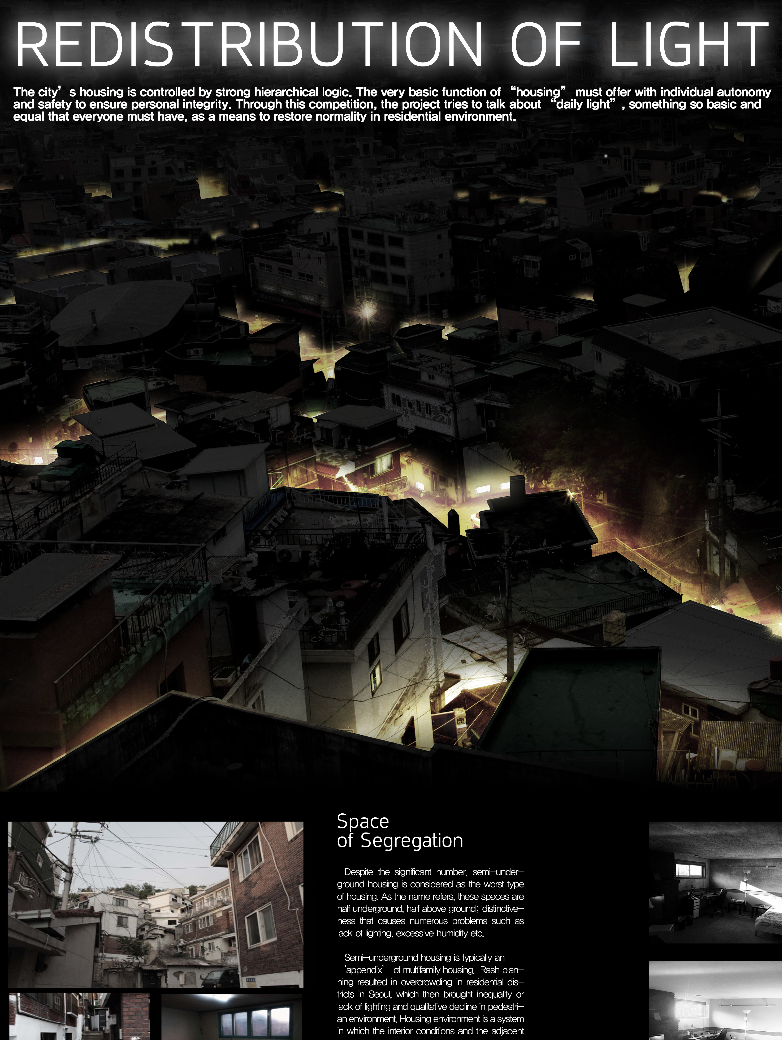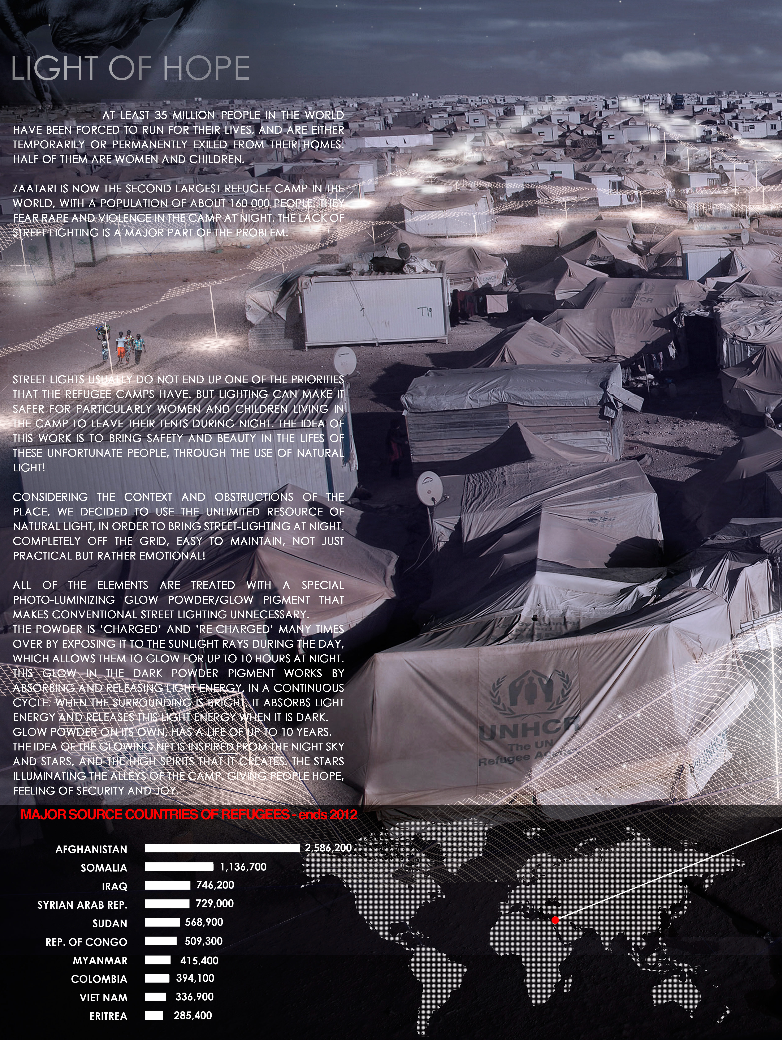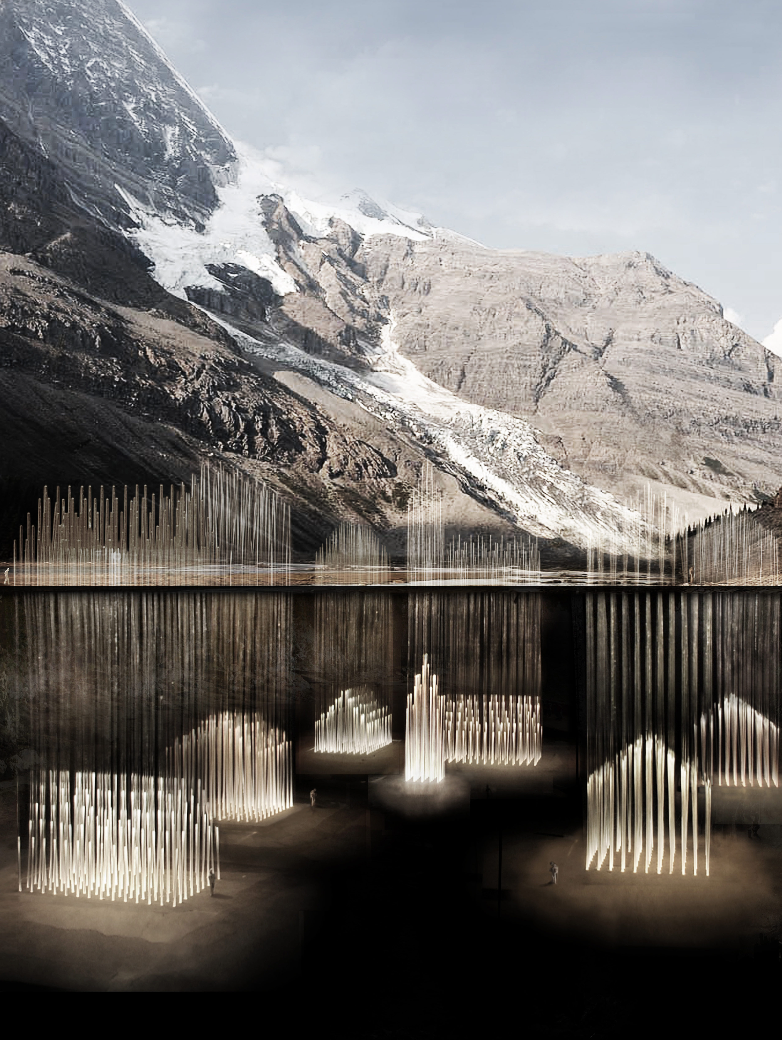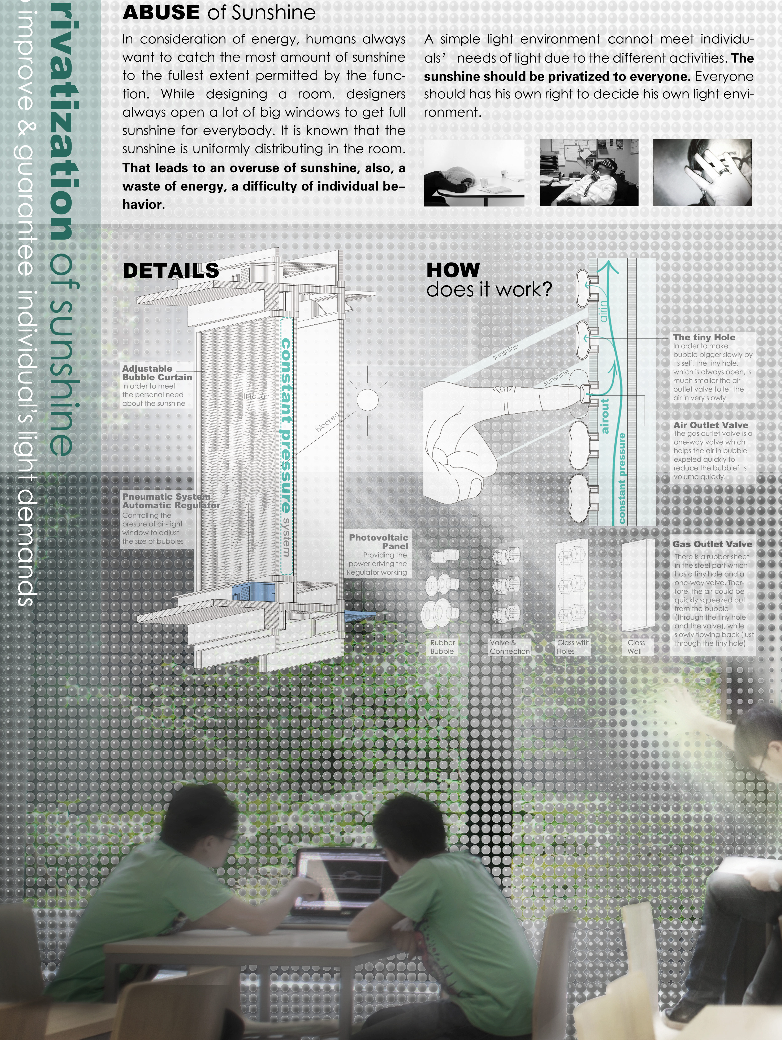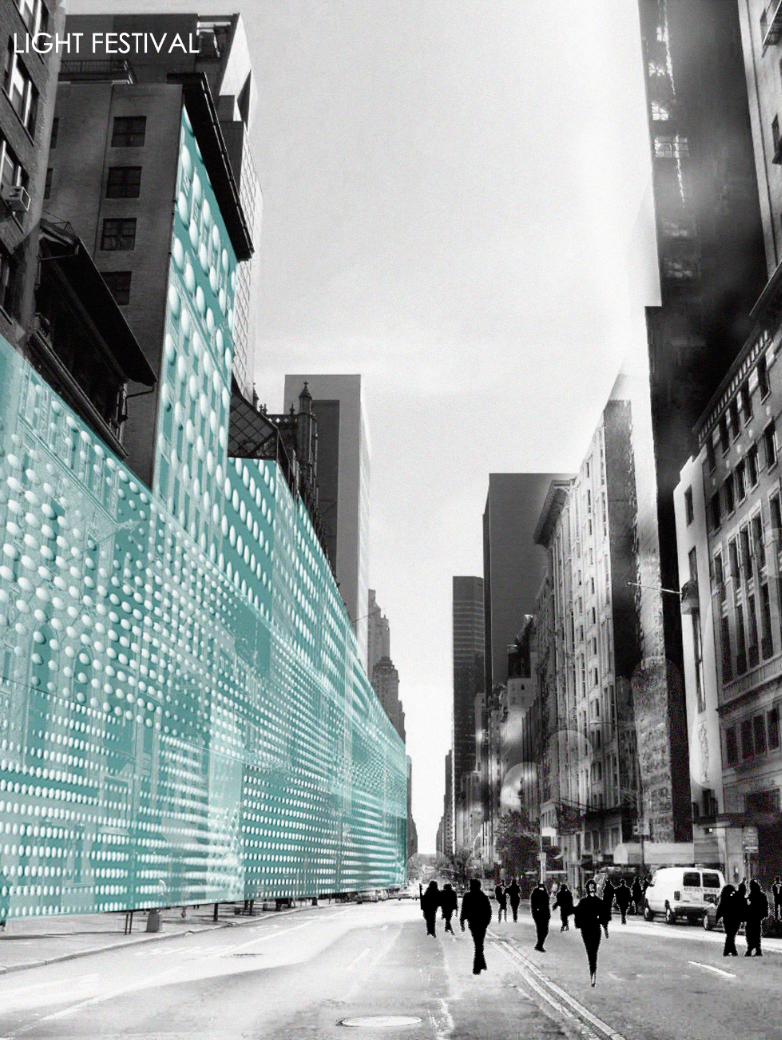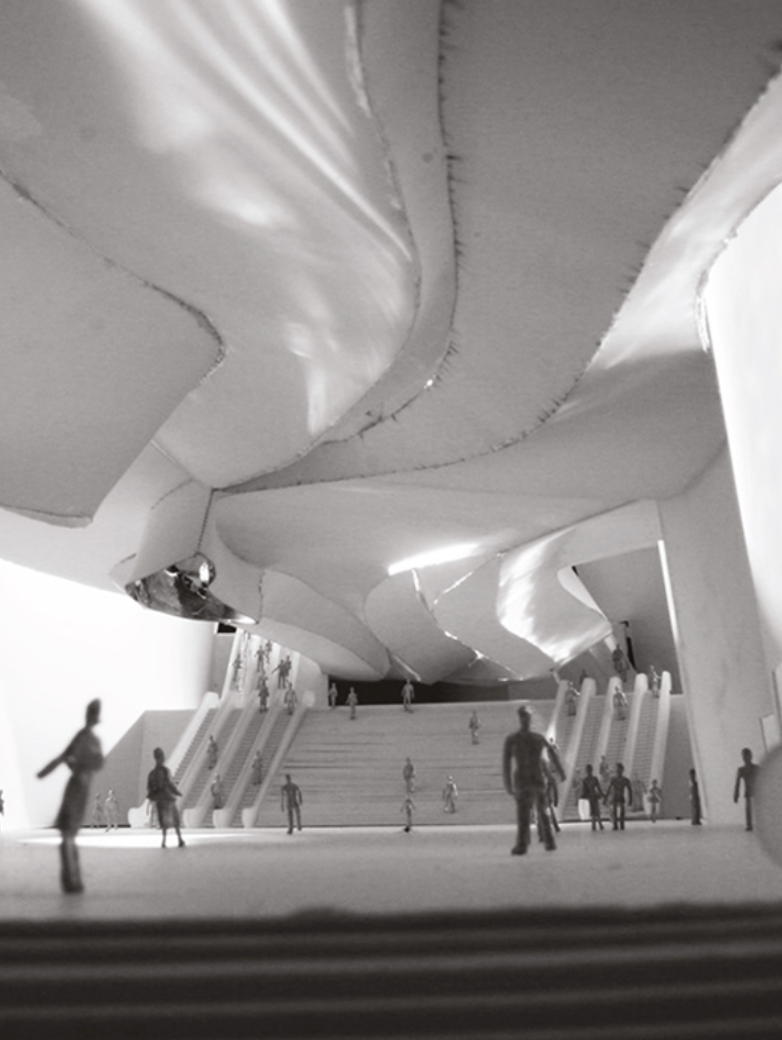2024 - Sand Sifter

Category
Daylight Investigations - Region 3: The Americas
Students
Jessica Jia, Jessica Wang & Renelle Handa
Teacher
Joshua Kirk
School
University of Waterloo
Country
Canada
Download
Download project board
A representation of innovative architectural solutions, Sand Sifter enhances beach environments by simultaneously addressing waste management and providing sun-shading facilities for beachgoers. Its dual functionality not only promotes environmental sustainability but also maintains the cleanliness of beach environments, taking principles of daylighting as an integral component to spatial experiences anywhere around the world.
Design Concept
Drawing inspiration from the natural behavior of composting worms, this structure operates in a dynamic serpentine path, sifting marine litter out of sands through its shovel-like mechanism and storing it into its internal ribbed cavity.
Pavilion Transformation
Sand Sifter’s most remarkable feature is in its ability to undergo a dynamic transformation. Upon completing its bi-weekly cleaning cycle, the worm structure stands erect and curls up into a pavilion, shading and sheltering occupants for a stunning visual experience that also acts as a symbol for environmental activism and awareness.
Daylighting and Solar Integration
The Sand Sifter serves as a paragon of daylighting principles. The tinted PV tiles that sheath the structure convert sunlight into electrical energy, powering its movement and its mechanical transformations. This integration of solar technology not only achieves self-sufficiency but also underscores the critical role of daylight as a sustainable energy source. Composed of adaptive panels, the pavilion dynamically responds to solar position and intensity, adjusting its configuration to maximize shading efficiency and create a continuously evolving interplay of light and shadow. During winter months, the panels close together to protect the structure and occupants from adverse weather conditions.
Intelligent Navigation
Equipped with advanced sensor technology, these smart-detection sensors guide the structure along optimal cleaning paths, ensuring comprehensive coverage while avoiding any potential disturbances to people or animals.
Impact on User Experience
- Educational and Demonstrative Value: The pavilion serves as a living demonstration of how daylight can be harnessed for both energy production and architectural design, educating the public on sustainable practices.
- Environmental Stewardship: By actively removing trash and marine litter, the pavilion promotes environmental conservation and sustainable beach management.
- User Comfort and Convenience: The pavilion provides essential shading, creating comfortable and protected areas for beachgoers.
- Aesthetic Dynamism: The changing configuration of the panels offers a dynamic visual experience, celebrating the light and shadow and highlighting the passage of time.
Keeping in mind that we needed a currently unnoticed but accessible location, the intervention takes place on a public
transport station, as public transportation is one of the most chosen ways to move around cities in Latin America. In fact,
around 1.600.000 people travel by metropolitan train every year in Argentina. As the Latin America and Caribbean
Development Bank stated, it is crucial to transform and upgrade public transportation, in order to achieve efficient, clean,
equitable cities.
Once we found our mission, we wondered if light was always there in order to enhance something else, and how could light
become the moment? In which way could we silence everything that surrounds it?
The idea is to “store sunlight in a box” and deliver a moment of light to everyone who finds it. Contemplating the site
position options, our priority is to emulate a journey by leaving the urban scenario, finding something atypical in an
unnoticed place.
In order to continue the urban landscape and create the suspense and silence we seek for, the pavilion takes place
underground. The roof becomes a platform on the ground level that functions both inwards and outwards, since it lets
sunlight in during daytime and projects artificial light out during nighttime. Light is in both manners within reach of a hand
